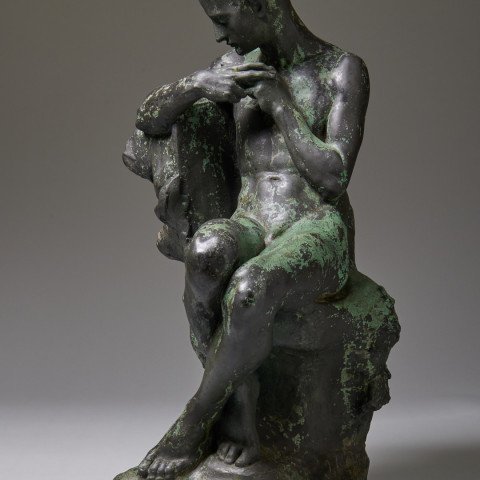Isidore Konti (July 9, 1862 – January 11, 1938) was a Vienna-born (of Hungarian parents) sculptor. He began formal art studies at the age of 16 when he entered the Imperial Academy in Vienna, where he studied under Edmund von Hellmer. In 1886 he won a scholarship that allowed him to study in Rome for two years. While there he developed a love of Renaissance art that was to affect the nature of his mature sculpture. Upon returning to Austria, Konti worked as an architectural modeler.
In 1890 Konti moved to America, going straight to Chicago, where he began working on sculptural decorations for the 1893 World's Columbian Exposition. When the work there was completed, he moved to New York City and commenced working as an assistant for fellow Austrian expatriate Karl Bitter. Konti's skills as a modeler kept him in much demand—for the 1900 Pan American Exposition in Buffalo, New York; for the 1904 Louisiana Purchase Exposition in St. Louis; and for the 1915 Panama Pacific Exposition in San Francisco. In 1906 he was elected into the National Academy of Design as an Associate member and became a full Academician in 1909.
Konti was a highly skilled practitioner of the Beaux-Arts tradition. He lived in Yonkers from 1906 until his death, even moving his studio from New York City in 1914. Konti became a key member of the Yonkers cultural scene, co-founding the Yonkers Art Association, serving as commissioner of the Yonkers Museum of Science and Arts (Hudson River Museum), and producing four commissions for public statuary.
Konti earned an international reputation for works such as "The Genius of Immortality". With it sensuous and sinuous lines and tactile surfaces, it is one of his most admired sculptures. The Metropolitan Museum of Art acquired a copy in 1916, the next year another was lent to the Detroit Institute of Art by one if its major donors. Overseas, the Italian government also owned a copy. Like many of Konti’s subjects, the poetic title of the Genius is not directly narrative, but suggests a variety of allegorical associations.
In 1908, Isidore Konti, busy with several commissions, hired Paul Manship as an assistant. Though Manship, a herald of Art Deco Modernism, is better remembered, both artists achieved international renown in their day, when their statues adorned the lavishly landscaped gardens of Samuel Untermyer’s Greystone estate. Their sculptures bracket the long years spent by Untermyer landscaping and embellishing his elaborate Yonkers estate, a portion of which is now preserved as a public park. Manship (1885-1966), then a burgeoning artist, worked in Konti's studio for a couple of years during which the two formed a lasting friendship. It is unclear whether Konti had anything to do with Manship's later much-celebrated commissions for Greystone, though if nothing else, Konti's 1906 fountain would have made Manship aware of Greystone and Untermyer.
After months of physical decline, Konti died of a heart attack in Yonkers, New York on January 11, 1938.

